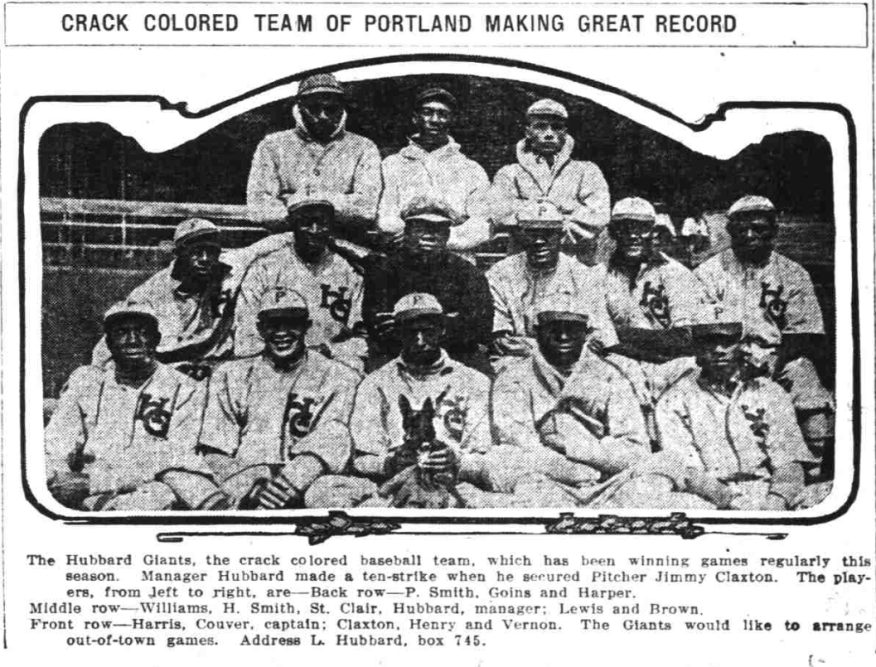
The Oregon Daily Journal – May 31, 1914
There once was a time when Portland, Oregon was one of the most decadent places on Earth. To view it now one could never imagine the underbelly of a growing city, once vied for every illegal activity known to mankind in the early 1900’s. Gambling, prostitution, bootlegging, unsanctioned boxing, et. al, were the daily staples of a Portland that men traveled near and far — to indulge their darker side. Yes, — it’s all true, and according to the Report of the Portland Vice Commission of 1913, commissioned by the Mayor and City Council, the investigation into hotels, apartments, rooming and lodging house showed that, out of 547 that were investigated for on going illegal activities, 431 of them were found to be immoral houses of ill repute.
This means that in 1913 in the city of Portland, there was a 78% chance of the men traveling to Portland, would be involved in some sort of illicit activity.
Houses of iniquity were quite common in early Portland. It was a place where betting and heavy drinking consumed one and all; where loose women and roguish men played, and bawdy houses were common sight. There has always been a certain amount of speculation as to the reasons why the Lew Hubbard Giants uniforms used dice decals to represent the player’s number on the back of their jerseys, and the reason their ball club’s location at 326 1/2 Couch Street, was found deep in the heart of Old Town – Chinatown. These facts should clear up any suspicions why these choices were made.
‘Seven come Eleven‘ in this part of town was a way of life in the 1900’s.

Lew Hubbard Giants Letterhead – 1912


This burgeoning community of 1900’s Portland was segregated by race in some instances, but that had little bearing on the illicit trade that took place all over early Portland. As for Lew Hubbard, AKA Horace Llewelyn Hubbard, any side gigs, from boxing to baseball, was supplemental income from his regular job as a mail clerk for the Board of Fire Underwriter Insurance Company.
The area in question, where the Lew Hubbard Giants operated in, where women like Rosie Copple and Blanche Rollo were frequently arrested for “vagrancy” AKA solictation, speaks to the seedy bars and back street alleyways that were seen in such movies as, “Eight Men Out”. The temperance movement had little impact on early Portland. It was a booze hound’s paradise. The West wasn’t always tamed, and early Portland reflected how rough and tumble life was in the West. It may be the reason that men like Charles “Swede” Risberg decided to open a bar in Weed, California after the infamous Chicago Black Sox scandal.
“Old Town – Chinatown” in Portland was famous for many things, including the Lew Hubbard Giants base of operation; particularly Old Town’s network of underground tunnels, used for Shanghaiing the unsuspecting inebriated fellow by ne’er do wells, secret underground gambling establishments — where games of chance took place twenty-four seven around the clock, and also for the secret movement of the bootlegging trade — which brought in the outlawed substances from the mouth of the Columbia River that connected with the Willamette River.
Portland was Las Vegas before Las Vegas was conceived.

Vice Map Legend – Report of the Portland Vice Commission – 1913

Portland Vice Map Legend with Google Map overlay

326 Couch Street, Portland OR

326 Couch Street, Portland OR – “Old Town – Chinatown” with Google Map overlay
This area was so popular with the ‘sporting crowd’, even Walter McCredie owned a billiard room, located at 128 1/2 6th Street (now Avenue), just two blocks from the boarding house that the Lew Hubbard Giants operated out of. “Judge” McCredie had a tremendous rapport with people of color, and he was more than likely connected with Lew Hubbard in some manner of sorts, using him as an ambassador when the Chicago American Giants barnstormed through Oregon, without ever revealing his involvement with Hubbard to the public. The Golden West Hotel was located at the corner of Broadway and Everett St., in the heart of this racially segregated community, not far from the Lew Hubbard Giants base of operation.
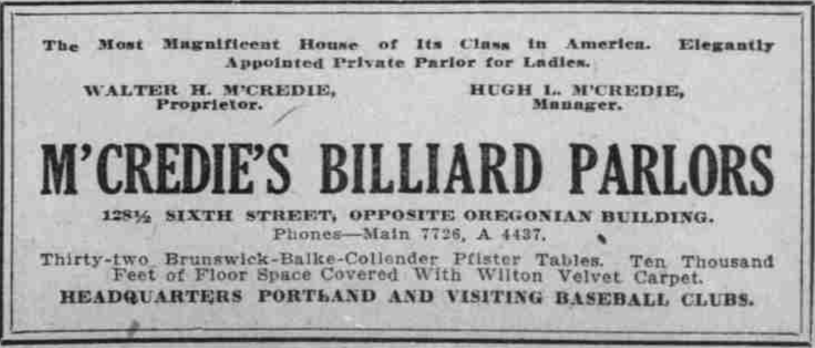
The Sunday Oregonian – July 10, 1910

Morning Oregonian – April 11, 1914

Chicago American Giants at the Golden West Hotel, Portland, Oregon, 1915

John H. Wilson was a bit of a color character himself. As President and Treasure of the Lew Hubbard Giants AKA Colored Giants of Portland, Wilson held a tight grip on the club’s purse strings, which included all events that ran out of the club. His titles gave the Lew Hubbard Giants legitimacy, even though said legitimacy was limited to the world of African Americans in early, segregated Portland. He was Oregon’s Gus Greenlee of sorts, running rackets from this personal den of iniquity. He ran the “gentleman’s club” where the Lew Hubbard Giants held court. And, according to those in the know, Wilson was well connected with the mucky-mucks ‘downtown,’ whenever his establishment was rousted by the overly eager patrolmen. There was nothing Wilson wouldn’t lay a bet on, including his own freedom from incarceration.
In most cases, he was correct.

Morning Oregonian – October 30, 1911
Wilson was also a boxing promoter of questionable reputation, which included licensed and unlicensed boxers, promoting sanctioned and unsanctioned bouts. These questionable “scientific boxing” events often included Lew Hubbard, Bobby Evans, and Kid Espisito. Lew Hubbard fought under the name “Lou Hubbard”, and only had one “professional” bout in his lifetime, which lasted less than three rounds. Hubbard, his opponent Dick Rhoades — and the referee, all fell out of the ring and landed in the crowd, which some considered a street brawl. The fight between Hubbard and Rhodes was ruled ‘no contest’.

Morning Oregonian – January 18, 1910

Morning Oregonian – January 22, 1910

The Sunday Oregonian – April 24, 1910
By May of 1910, the match staged between Hubbard and Rhodes on Jan. 20th of that year, came under the scrutiny of the Portland’s Municipal Association Morals Commission, for more or less an exhibition of fisticuffs that turned in a violent brawl. The men who promoted the match, former Detective Patrick Maher and John T. Wilson would have to answer to charges of immorality and embezzlement, for staging “prize fights” where no prizes was ever offered to the winners of the events. Eventually, John T. Wilson was out of the picture and Maher and Hubbard were indicted for fraud.


Morning Oregonian -May 7, 1910


The Sunday Oregonian -May 8, 1910


The Sunday Oregonian – June 5, 1910
Hubbard asked the judge to allow him to be tried in a separate trial, without all the others who had been indicted. The trial never took place that summer. It was a “test case”, the first of its kind in Portland and Hubbard made bail; but he was scapegoated every step of the way. The long and short of this story is this: crooked cops make crooked politicians, and Hubbard was caught in the middle between Maher and Wilson; for Hubbard was neither cop nor politician. This 1910 incident thrust Horace Llewelyn Hubbard into local fame as a burgeoning welterweight, and someone who knew his way around the boxing ring.
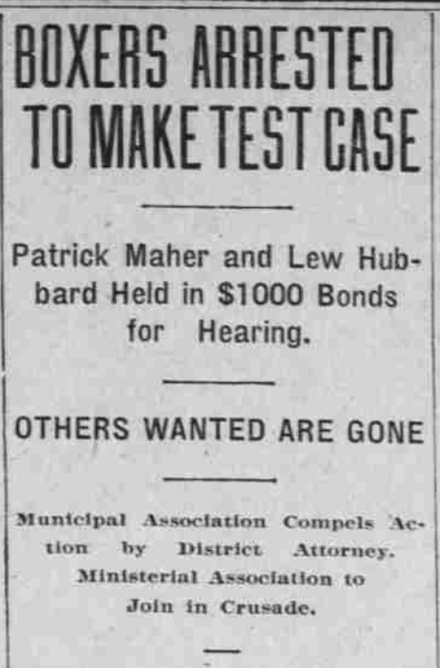

The Sunday Oregonian – May 1, 1910
What seemed like nothing more than a mediocre task of boxing performed for your dinner, then possibly ending up in jail for prize fighting at an unsanctioned event, catapulted Hubbard into the ranks of one of Oregon’s most undeniable sports figures. Who with this single act, used it as the platform for the creation of the Lew Hubbard Giants. This was the era of the “Great White Hope”, James J. Jeffries, and the man who would defeat him, Jack Johnson.
Sparing in front of a huge crowd with Commonwealth (British Empire) Heavyweight champion of the World, Tommy Burns, gave Hubbard community credibility.

Morning Oregonian – October 15, 1910
Deemed “The Fight Of The Century” by every newspaper in America, the Jeffries vs. Johnson battle royale would be considered the ultimate boxing event in the world, because boxing, or fisticuffs was at the time considered “the sport of kings”. Betting on this particular fight set the tone for the nation, especially where race relations and money in boxing were concerned. This was true, even in Portland, where events were smaller, but a constant source of revenue.
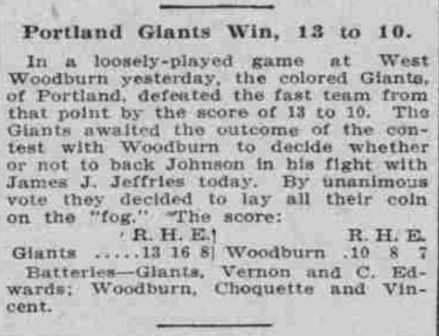
Morning Oregonian – July 4, 1910
Between the years 1910 and 1922, the Lew Hubbard Giants played baseball, respectively off and on, as a form of community ‘entertainment’, until 1914 when they actually got serious about league play and winning. In the beginning, they were limited in both skills and popularity. Yet, their games were a very important form of entertainment, for the rather small African American population in Oregon, eking out a meager living in Portland or rural areas, where there were few jobs for black people that could be accessed.

Oregon City Enterprise – July 15, 1910
Early in Oregon’s history, Black Exclusion Law had set a tone for how Oregon would operate in relation to African American residents for over a century, — until February 24, 1959, when Oregon finally ratified the 15th Amendment. This predetermined societal attitudes about African Americans living in Oregon, predated the Civil War, when Oregon was still only a territory of the United States. This racial divide carried forward from 1844 on into the turn of the 20th century.
Old Town – Chinatown was a necessary component of Portland’s seedier activity, where men folk could blow off steam; illegally in some cases. Places like the Star Theater, where men could go and watch silent movies or witness burlesque shows, were a part of Old Town’s charm and scandalous behavior.

Star Theater -1911
When the Chicago American Giants traveled to Oregon in April of 1914, to play against rural teams, like the one in Medford, its not quite certain what Rube Foster’s expectations of a reception would be, — but starving to death was probably the last thing on his mind. Outside of Old Town – Chinatown, African Americans were sparse, and in some cases, almost nonexistent. The more rural the area was, the more chance a African American would encounter blatant, overt racism. This was not unusual, because Corvallis, Oregon, — home of Oregon State University, had once been a Confederate stronghold during the Civil War, when it was still called ‘Marysville‘.
By the 1920’s, Medford, Oregon would become the first Ku Klux Klan stronghold in Oregon, built on the concept of “One-Hundred Per Cent Americanism“. Also, between 1912 and 1916, a few of the Lew Hubbard Giants played for the Oakland Giants, Lynne-Stanley Giants and the Oak Leafs. The Oregon and California Express AKA the “Shasta Limited” rail route kept them connected, as many of them were also Pullman Porters. The ‘Shasta Limited’ also became the name of another African American baseball team; one that was well earned in all respects.
Claude Orpheus Couver, H. Smith, and Jimmy Claxton were among the three known to have ventured to the Bay Area.

H. Smith – 1912 Oakland Giants

H. Smith – 1914 Lew Hubbard Giants

Oakland Tribune – April 12, 1916
Claxton, as the story goes, was a 1914 and 1915 favorite of the Lew Hubbard Giants, and a tremendous drawing card. Between Claxton, and second baseman, Hugh Harper, the Lew Hubbard Giants were an up and comer in the Bank League.

The Oregon Daily Journal – April 12, 1914

The Sunday Oregonian-September 6, 1914

The Oregon Daily Journal – June 14, 1914

Morning Oregonian -March 9, 1915
In August of 1913, the land holdings in the name of Ivo Bligh, 8th Earl of Darnley, came under heavy scrutiny of the Portland Vice Commission, Although his name was never mentioned in the newspapers, Bligh’s legacy was well known all over the world. It seemed the world renowned cricketeer, was the owner of large swaths of land and buildings in the worse part of Portland. This Lord of the Slums, Ivo Bligh, was best known for receiving “The Ashes” urn by a group of Melbourne women from Australia symbolizing “the ashes of English cricket”, where English cricket had once died — but Bligh an Co. took the ashes back to England, after defeating Australia in the Test series. The story of retrieving ‘the Urn’ is legendary, where to this day, Bligh’s feat is remembered in poem and song.


Morning Oregonian -Aug. 26, 1913

English Cricket Team of 1882

“The Ashes” urn of Cricket – 1882

“The Ashes” song “Who’s On The Cricket Field” -1883
It’s not certain whether Bligh had any interest vested in baseball or boxing. It is certain that he had a vested interest in gambling and prostitution, as an absentee slum lord, who provided places of operation for these illicit occupations. There was no question as to his investments and the liquidation of his properties by the Wilder Bros. in 1920, years after the Tin Plate Ordinance took effect in the North End. It became more difficult to make money in these areas, as the public turned against the income streams that built early Portland from the ground up.
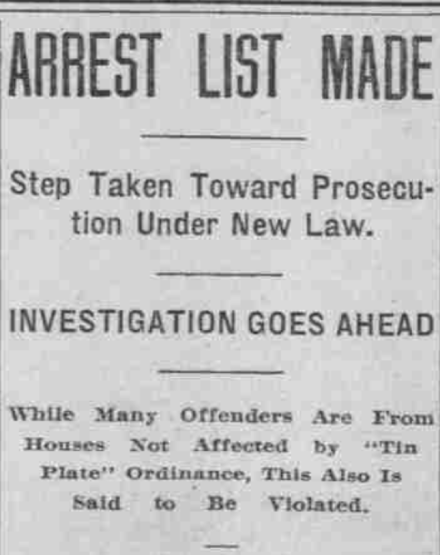
The Sunday Oregonian – August 10, 1913

The Sunday Oregonian – February 8, 1920
As the Tin Plate Ordinance rooted itself in Portland’ underbelly, Hubbard turned to more legitimate sources of income. In 1917, Fred J. McClear and Lew Hubbard became business partners in a dance school, and Hubbard put together a traveling jazz band, to play at functions — so their students could utilize the new found skills on the dance floor.
McClear’s main gig was a porter at Waldo Bogle‘s ‘Golden West Hotel Barbershop’, which specialized in the art of grooming with, “Physionomical Hairdressers, Facial Operators, Crainum Manipulators, and Capillary Abridgers and Skeemotis Operators“. How one sold one’s craft, … is how one was perceived by one’s clientele, — and by the world at large. A haircut, with a shave, or a scalp massage, or deep tissue massage, etc., just didn’t cut it in the 1900’s. This involved not just ‘good looks’, but defined one’s character as well.
It was something the well groomed man could not ignore.
The sales pitch was everything.

Eastern Clackamas News – November 15, 1917
The Lew Hubbard Giants story is a complex one, where the club itself played in an era and area of the nation, — at a time when documentation of their involvement and exploits as purveyors of baseball, and the “Artistic Exponents Of The Great National Pastime” — as stated by their own words, — were limited to a blurbs here and there, in the sports section of Oregon’s local newspapers. Their story is so much larger than a ‘single member of the team’, whose image nets auction premium prices for a once lost and mow found Zeenut card. Sometimes, their story was less than flattering, and most times it was racially charged and virulently humiliating. Yet, their presence in the sport of baseball allowed others to take that trip out West, to Oregon’s ‘unwelcome territory’. The Lew Hubbard Giants connection to the Negro Leagues steps far beyond baseball, becoming a source for social camaraderie and fellowship among men of their day– as well as a safety net for those who dared brave barnstorming trips across the nation, for untold adventures in early Oregon.



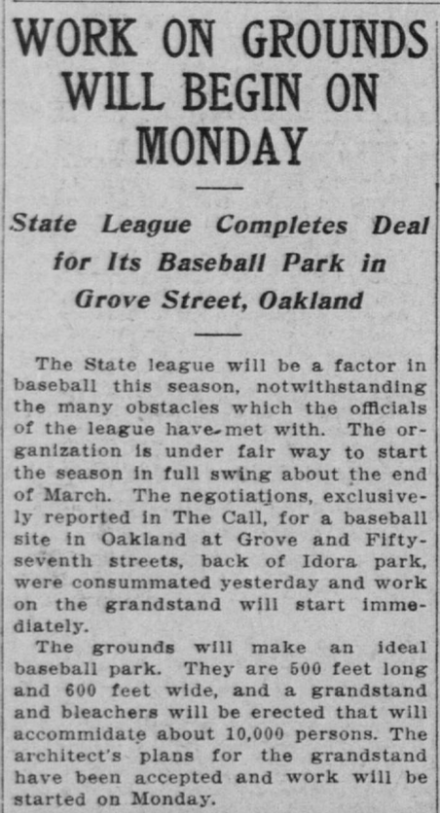



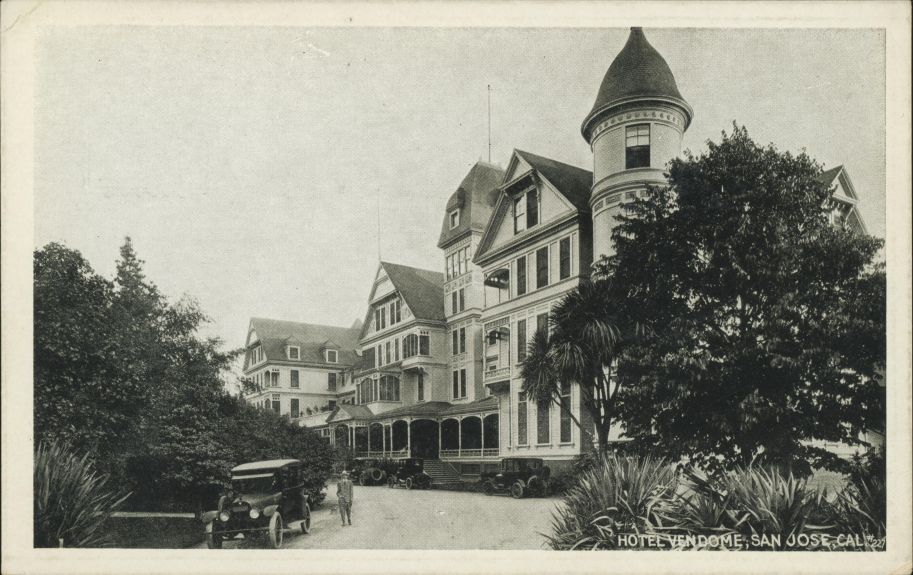



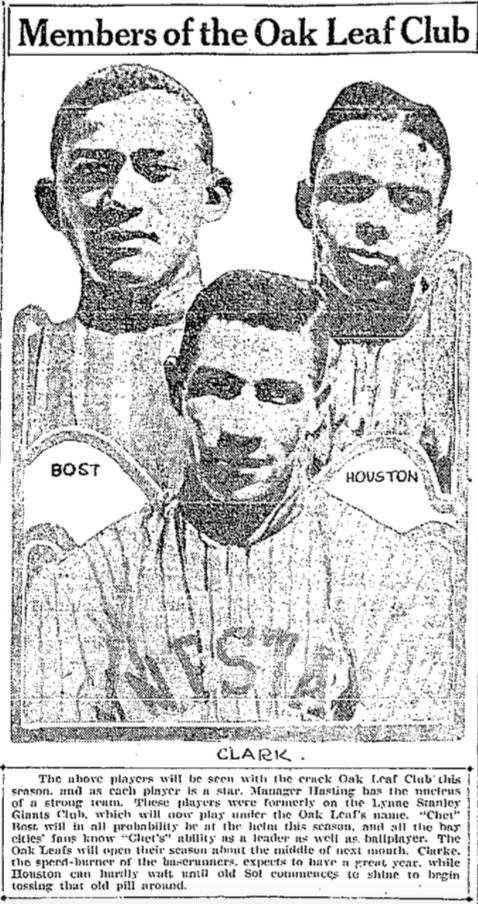

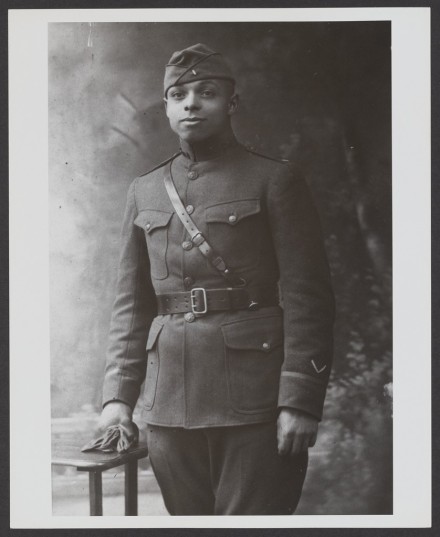
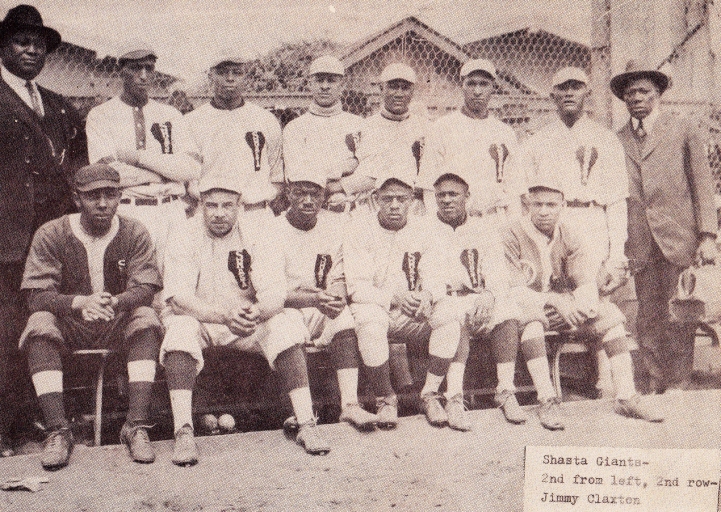
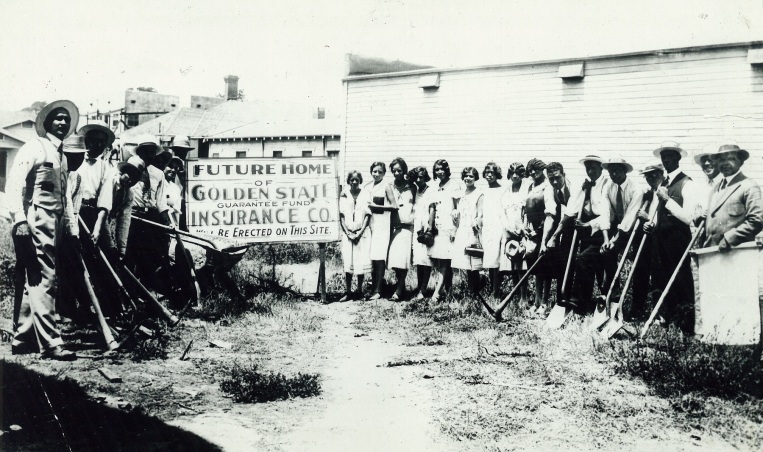
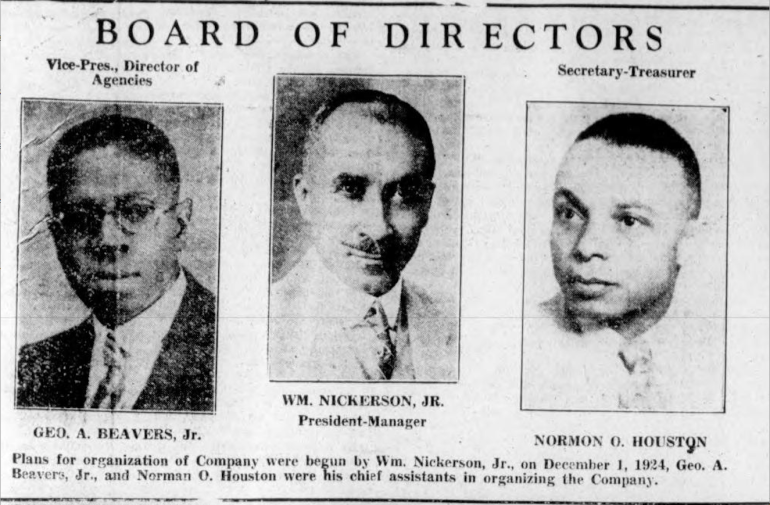

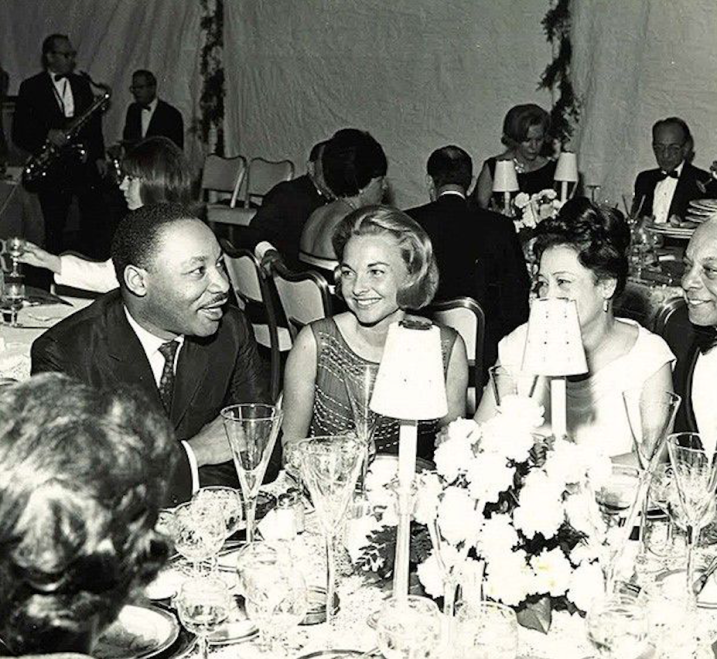

 Congressman Andrew Young and Norman O. Houston (UCLA, Library Special Collections, Charles E. Young Research Library)
Congressman Andrew Young and Norman O. Houston (UCLA, Library Special Collections, Charles E. Young Research Library)




